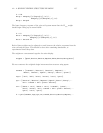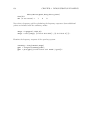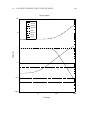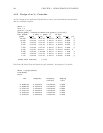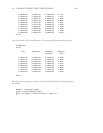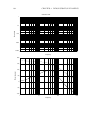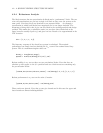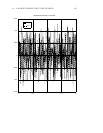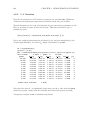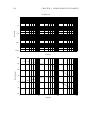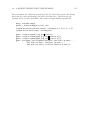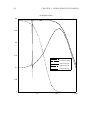4.2. A SIMPLE FLEXIBLE STRUCTURE EXAMPLE 165
4.2.4 Robustness Analysis
The block structure has two perturbation ∆ blocks and a “performance” block. The two
voice-coil perturbations are put into a single 1×2 block as they enter the system at the
same point. Note that this is not identical to two separate blocks — for example a
perturbation in which both blocks have magnitude one is now longer included. The
advantage of doing this is that it give one less block in the resulting analysis and design
problem. This makes the µ calculation easier (we now have three blocks and so the
upper bound is actually equal to µ) and gives one less D-scale to be approximated in the
D-K iteration.
blk = [1,2; 1,1; 2,3]
The frequency response of the closed loop system is calculated. The nominal
performance test simply involves checking the H
∞
norm of the nominal closed loop
system. This is a maximum singular value test.
Ghinfg = freq(Ghinf,omega);
npbnds = norm(svd(Ghinfg(4:6,3:4)),inf)
Robust stability is a µ test as there are two pertubation blocks. Note that here we
calculate µ with respect to the G
11
partition and use a block structure containing only
the perturbation blocks.
[rsbnds,Drs,Drsinv,Deltars,sensrs] = mu(Ghinfg(1:3,1:2),[1,2; 1,1])
Robust performance is a µ test on the entire G matrix.
[rpbnds,D,Dinv,Delta,sens] = mu(Ghinfg,blk)
These results are plotted. Note that µ tests give bounds and in this case the upper and
lower bounds are almost indistinguishable.



